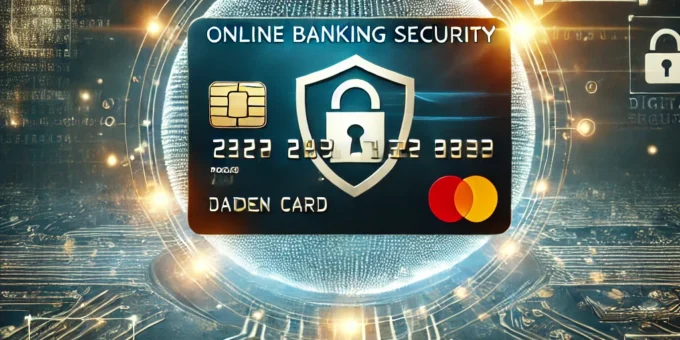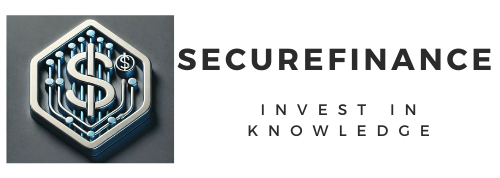
Fraud and scams targeting bank accounts are on the rise, and protecting your financial security is more critical than ever. Scammers employ increasingly sophisticated tactics to exploit vulnerabilities. By staying informed and implementing robust security measures, you can safeguard your bank account from unauthorized access. This article will walk you through proven strategies to protect yourself from financial fraud and scams.
Understanding Bank Fraud and Scams
Bank fraud involves deceptive practices to gain unauthorized access to an individual’s funds or financial information. Scams can range from phishing emails and fake calls to skimming devices at ATMs. Recognizing the types of fraud is the first step toward prevention.
Common Types of Bank Fraud
- Phishing Scams: Fraudulent emails or messages designed to steal your login credentials.
- ATM Skimming: Devices installed on ATMs to capture card details.
- Identity Theft: Using stolen personal information to access accounts.
- Social Engineering Attacks: Manipulating individuals into revealing confidential details.
- SIM Swapping: Transferring your mobile number to a new SIM card to intercept one-time passwords.
Secure Online Banking Practices
Online banking offers convenience but requires diligence to avoid risks. Implementing robust security measures ensures that your financial transactions remain private and secure.
Tips for Secure Online Banking
- Use Strong Passwords: Create unique and complex passwords for your bank accounts. Avoid using easily guessable information like birthdays or common words.
- Enable Two-Factor Authentication (2FA): This adds an extra layer of protection by requiring a second form of verification.
- Update Software Regularly: Ensure that your computer, smartphone, and apps are up-to-date to fix security vulnerabilities.
- Avoid Public Wi-Fi: Public networks can be unsecured, making it easier for hackers to intercept your data.
Beware of Phishing Attempts
Phishing is one of the most common tactics used by scammers to steal sensitive information. Awareness is your best defense.
How to Recognize Phishing Scams
- Unusual Email Addresses: Scammers often use addresses that closely mimic legitimate ones.
- Urgent Language: Messages claiming immediate action is required often aim to create panic.
- Attachments and Links: Avoid clicking on unexpected links or downloading attachments.
What to Do If You Suspect Phishing
- Do Not Respond: Ignore suspicious emails or messages.
- Verify Through Official Channels: Contact your bank directly to confirm the authenticity of the message.
- Report the Scam: Forward phishing emails to your bank’s fraud department.
Monitor Your Bank Account Regularly
Frequent monitoring of your bank statements and transaction history helps you detect unauthorized activities early.
Steps to Monitor Effectively
- Set Up Alerts: Enable notifications for account activities, such as withdrawals or purchases.
- Review Monthly Statements: Check for unfamiliar transactions and report them immediately.
- Use Banking Apps: Secure mobile apps often offer real-time transaction updates.
Protect Your Personal Information
Scammers often rely on stolen personal information to execute fraud. Protecting your data minimizes the risk of unauthorized access.
Best Practices for Data Protection
- Limit Sharing Online: Avoid oversharing personal details on social media.
- Secure Documents: Shred old bank statements and receipts before disposing of them.
- Be Wary of Calls: Legitimate banks will never ask for sensitive information over the phone.
Stay Vigilant at ATMs
ATMs are common targets for fraudsters. Taking precautions while using them can reduce your risk.
ATM Safety Tips
- Inspect the Machine: Look for unusual attachments or loose parts.
- Shield Your PIN: Use your hand to cover the keypad while entering your PIN.
- Choose Safe Locations: Use ATMs in well-lit, busy areas to deter tampering.
The Role of Your Bank in Fraud Prevention
Banks invest in advanced technologies to detect and prevent fraud. Understanding your bank’s fraud protection policies can provide added security.
Fraud Prevention Features Offered by Banks
- Fraud Detection Systems: Banks monitor transactions for unusual patterns.
- Zero-Liability Policies: Many banks offer reimbursement for unauthorized transactions if reported promptly.
- Educational Resources: Access your bank’s resources to stay informed about emerging threats.
How to Respond If You’re a Victim of Bank Fraud
Despite best efforts, falling victim to fraud is a possibility. Knowing how to respond can mitigate losses.
Steps to Take Immediately
- Contact Your Bank: Report the incident and request an account freeze if necessary.
- File a Police Report: Document the fraud for legal and insurance purposes.
- Monitor Credit Reports: Check for unauthorized accounts or activities.
- Change Passwords: Update login credentials for all affected accounts.
FAQs
What is the safest way to bank online?
Using secure devices, enabling two-factor authentication, and avoiding public Wi-Fi are key practices for safe online banking.
How can I tell if an email is a phishing attempt?
Look for signs such as unusual sender addresses, grammatical errors, and unsolicited requests for personal information.
What should I do if I lose my bank card?
Notify your bank immediately to freeze the card and prevent unauthorized use.
Can banks recover stolen funds?
Many banks offer reimbursement for unauthorized transactions, but prompt reporting is crucial.
How often should I monitor my bank account?
Regularly review your account, ideally weekly, and enable alerts for real-time updates.
Is mobile banking safe?
Yes, if you use official apps, keep your phone updated, and avoid sharing sensitive information on unsecured networks.
You Can Also Read : How to Stay Updated on Cryptocurrency Regulations
Conclusion
Protecting your bank account from fraud and scams requires vigilance, awareness, and proactive measures. By staying informed about emerging threats and adopting secure practices, you can safeguard your financial assets. Whether online or at the ATM, every precaution counts in preventing fraud. Remember, your financial security starts with the steps you take today.
